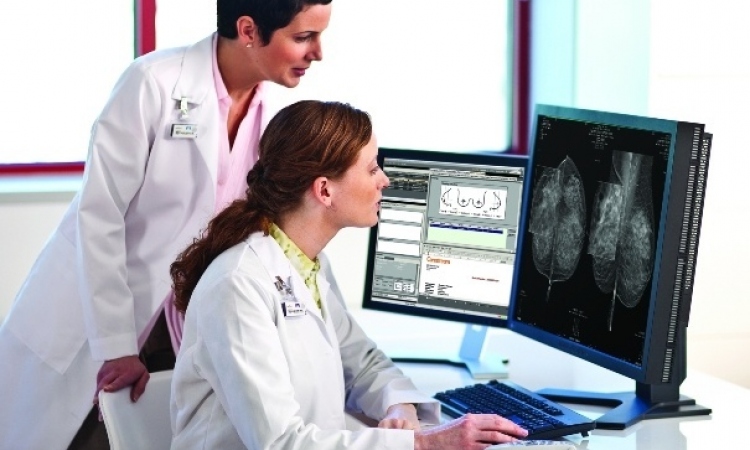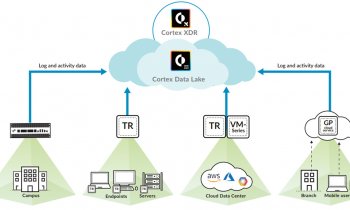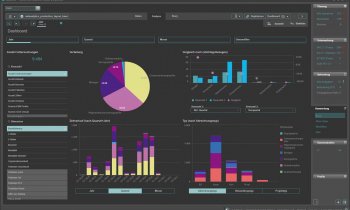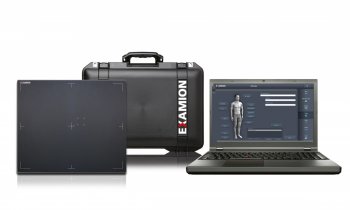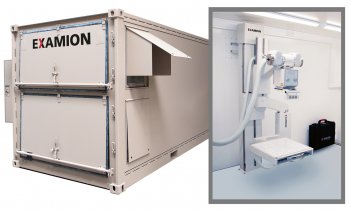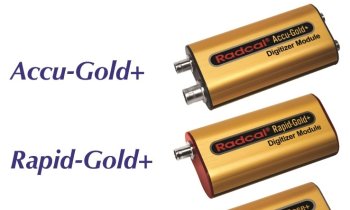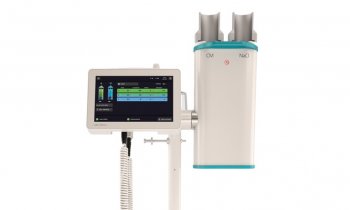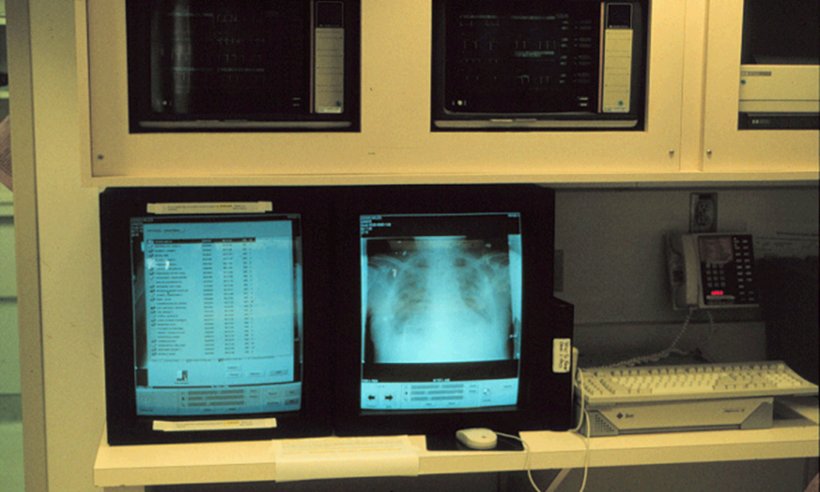
Photo courtesy of Katherine P. Andriole, Ph.D.
Article • Pioneering women in medical imaging informatics: Katherine P. Andriole
A journey from the cradle of digitization to the dawn of AI in radiology
The Society for Imaging Informatics in Medicine (SIIM) has done more than any other professional society to promote the digital conversion of medical imaging from X-ray film and 35 mm slides. The pioneering research of its members over the past 40+ years transformed timely access to radiology exams and created a sea change for radiology department operations and how data from imaging could be analysed. Although a mostly male dominated field, women did and are increasingly making important contributions in the technology. SIIM is producing a “Women in Informatics” webinar series, launching it with a profile of Katherine P. Andriole, Ph.D., a leading expert and one of the first women to enter the field.
Article: Cynthia E. Keen
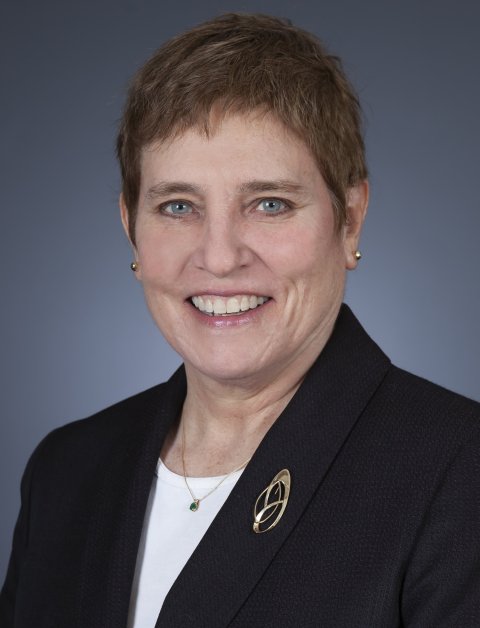
Andriole is lauded by numerous medical societies and organizations for her many technical accomplishments, and for her leadership role to promote medical imaging informatics. She was instrumental in helping design, build, and implement one of the first pre-commercial hospital Picture Archiving and Communication Systems (PACS). She is now focusing on the use of artificial intelligence (AI) systems in medical informatics. Andriole has authored or co-authored more than 160 peer-review journal articles.
Healthcare in Europe talked with Andriole about the evolution of medical imaging informatics, experiences she has had, and her advice to those – both women and men – who want to enter the field.
The impact of timing: starting a career at the dawn of a revolutionary era in radiology
Andriole points out that the ubiquity of digital medical imaging didn’t happen overnight. It is the result of the collective efforts of an international group of radiologists, engineers, computer scientists, medical device and software product developers, medical information technology specialists, and medical physicists to develop methods to extract, organize, share, and utilise data and images from digital modalities.
Medical imaging informatics has evolved over decades, eventually becoming a subspecialty of radiology. It has crucial role in exchanging and utilizing medical images within complex information systems. By combining information science, computer science, and healthcare, informatics optimize the acquisition storage, retrieval, and utilization of healthcare information, enhancing accessibility and quality.
This was a different era. MRI was relatively new, PET was a novel toy, radiology reporting was dictated to a tape recorder and manually transcribed to paper records, and exam scheduling was done by phone
Katherine P. Andriole
None of this existed when Andriole entered college. Her parents, both healthcare professionals, and especially her mother, were influential in stimulating interest in math and physics as applied to biology and medicine, and in showing what a powerful, determined woman could achieve. Andriole studied biomedical engineering at Duke University, focusing on signal processing. She earned a Ph.D. in electrical engineering and medicine at Yale University, with an emphasis on classical machine learning and image processing.
‘My initial work with imaging devices was to manually measure carotid arteries seen on CT scans,’ she said. ‘At the time, no efficient means existed to acquire digital data directly from CT images. This was a different era. MRI was relatively new, PET was a novel toy, radiology reporting was dictated to a tape recorder and manually transcribed to paper records, and exam scheduling was done by phone.’
A chance encounter at a medical conference with H.K. Bernie Huang, D.Sc., a leading PACS pioneer, led to a fellowship in radiology to work on research in digital imaging and PACS development, first at University of California, Los Angeles (UCLA), and subsequently at the University of California, San Francisco (UCSF). With that, Andriole’s trailblazing career took off.
HiE: You have experienced some seismic changes in radiology. What had the greatest impact? How did you adjust to change?
Andriole: ‘In my opinion, the establishment of the DICOM standards and systems integration of RIS/PACS/HIS were foundational elements. With these, capabilities and functionality soared. Continuous improvements in computing power and network capabilities, plus dramatic reduction in the cost of digital storage also had a huge impact.
‘The DICOM standards enabled us to extract accurate data in an orderly manner from any vendor’s proprietary imaging scanner or PACS, enabling interoperability. An image interchangeability DICOM demonstration among technical exhibition vendors at the 1995 RSNA annual meeting was a monumental event. ‘Image storage has evolved from a walk-in refrigerator sized magneto optical disk storage system holding a maximum of 1 terabyte of data to laptop computers with that capacity and accessibility to cloud storage. The improvements in network data transfer, combined with dramatic cost reduction of transmitting data, were game changing. The technologies became affordable and adoptable.’
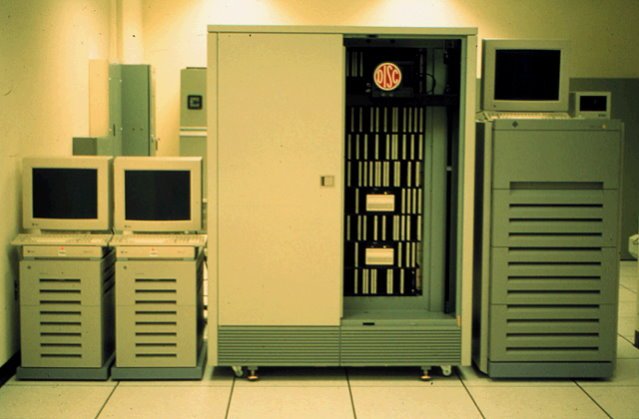
Photo courtesy of Katherine P. Andriole, Ph.D.
‘I was a member of a multi-specialty team at UCLA and UCSF whose goal was creating a sea change using technology innovations to improve radiology. I had brilliant, supportive mentors. The late Theo C. Pilkington, Ph.D., a pioneer of biomedical engineering, taught me how to approach projects with many unknowns. He ingrained the mandate that if you are going to do anything, you need to understand the fundamentals of a science or technology and its impact.
‘Huang insisted that his PACS team embed itself prominently in the clinical environment to understand what tools are needed, how they will impact workflow, and what benefit they will have. What makes a tool useable and compelling, improving upon an older method of doing something or introducing something totally novel but potentially beneficial? What characteristics of a tool or a process cause a user to like or to hate it?’
Andriole says that she carried these philosophies with her on all future projects, including current AI applications for medical imaging.
You are a RSNA 2022 Gold Medal recipient for rendering ‘remarkable service to the science of radiology’. What do you think your greatest contributions are to medical imaging in your career as a medical informaticist?
‘What I have achieved has been as a member of a team. Informatics is teamwork. It requires team science, clinical domain experience, IT experience, and implementation science. The teams I have worked with demonstrated how to develop innovative beneficial technology constructively working with all the players, including vendors, convivially and having fun.
‘I am proud of the work we did to be among the first to acquire data from computed radiography (CR) scanners and to show that CR-generated data could be used even though spatial resolutions were challenged. CR scanners were designed at the time to transmit data only to X-ray film printers. We had to do reverse engineering using ACR/NEMA standards and then DICOM standards.
‘I also am proud of developing simple, easy-to-use interfaces for PACS viewing-only workstations for ICU, neonatal ICU ward, and Emergency Department physicians. And with David E. Avrin, M.D., Ph.D.,of UCSF for developing software for automated image pre-fetching of relevant prior exams to a PACS diagnostic workstation cache for comparison with a new exam being interpreted. These both were revolutionary at the time.’
Is medical imaging informatics a good career choice for women? What is your advice for entering this specialty?
‘Most definitely. There will be a growing need for medical imaging informaticists, especially as AI tools become commonplace aids to radiologists. Someone has to validate their need and monitor their use and performance. People who are inquisitive and who like to solve problems enter this field with many different backgrounds.
‘I encourage anyone interested in the field to attend society meetings such as SIIM25, in person. I can’t emphasize this enough. It’s where you meet the pioneers and leaders, make connections, and can ask questions. Proactively network with end users and with vendors. I also recommend the National Imaging Informatics Course, an accelerated introduction to this specialty. It’s a five day long deep dive into the field. Tuition scholarships are available from its SIIM and RSNA sponsors.’
Profile:
Katherine P. Andriole, PhD, is the Director of Academic Research and Education of the Mass General Brigham AI Office, formerly the MGH & BWH Center for Clinical Data Science (CCDS). She is currently an Associate Professor of Radiology at Harvard Medical School, Brigham and Women’s Hospital. She has served on the RSNA Radiology Informatics Committee and is the Senior Scientist for Education at the American College of Radiology Data Science Institute. The RSNA awarded Andriole its RSNA Gold Medal in 2022, the Society’s highest honour, as well as the RSNA Lifetime Honored Educator Award. She is a Fellow of and has held leadership positions at SIIM since the early 1990’s and received the SIIM Gold medal in 2022. Andriole is also a Fellow of the American College of Radiology (ACR) and the Society for Photo-optical Instrumentation Engineers (SPIE).
References:
- Andriole KP. Picture archiving and communication systems: past, present, and future. J Med Imaging (Bellingham). 2023. 10(6):061405. doi: 10.1117/1.JMI.10.6.061405
- Andriole KP. SPIE Medical Imaging 50th anniversary: history of the Picture Archiving and Communications systems Conference. J Med Imaging (Bellingham). 2022 Feb;9(Suppl 1):S12210. doi: 10.1117/1.JMI.9.S1.S12210
- Andriole KP. What is a Medical Imaging Infomaticist and What Does She Do? JACR. 2016. 13:10/p.1276-1278. dx.doi.org/10.1016/j.jacr.2016.06.012.
- Mathurin CE, Tomblinson CM. Katherine P. Andriole - A trailblazer in informatics and radiology. Clinical Imaging. 2024.107:110069. doi: 10.1016/j.clinimag.2023.110069.
20.02.2025



